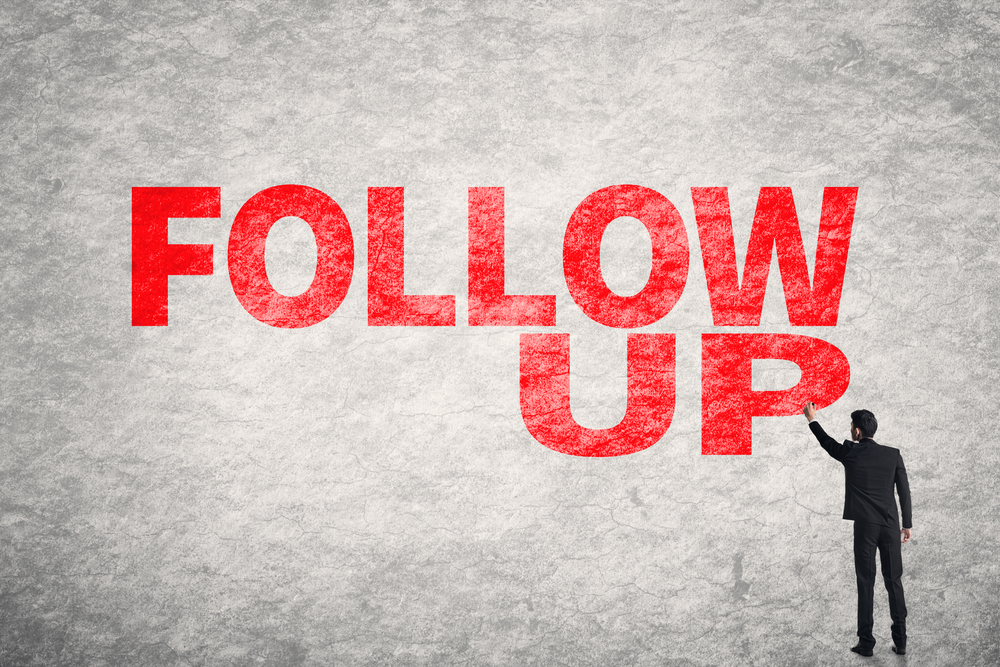The Benefits of Direct Response Marketing

No small business can be truly successful without an effective marketing strategy. But for those entrepreneurs who are not exactly marketing wizards, it can seem like a complex world of strange acronyms and unfamiliar complexities with results that can be difficult to gauge. From print advertisements and TV commercials to SEO and social media, marketing is an entire industry unto itself– and one that many small business owners have little time for.
However, direct response marketing is one area of the field that offers several advantages for small business owners and can be truly effective for nearly any type of business. In addition to opening up a direct line of communication with your clientele, direct response marketing:
- Provides a great return on investment (ROI), no matter your marketing budget
- Produces easily measurable results
- Helps increase the overall efficiency of a sales force
- Allows businesses to reach outside of local areas or traditional markets
- Builds real relationships with customers and clients
What is Direct Response Marketing?
Whereas all effective forms of marketing should be targeted towards a certain group of people and seek to engage with that target market, direct response marketing takes that engagement a step further. It is designed to elicit a specific, measured response resulting from a potential customer’s direct response to the marketer.
This type of marketing can be used to ask for customer emails on your website, solicit comments on an article, produce social media responses and similar forms of direct engagement and feedback. Before the digital era, most direct response marketing was done through telemarketing and direct mail. While these can still be effective in many industries, the internet has opened up a universe of new possibilities for this efficient form of marketing, and small businesses have benefited greatly.
In addition to the time-honored traditions of direct mail and telephone calls, modern direct response marketing can take the form of:
- Calls to action (CTAs) on your website
- Emails that are designed to elicit a certain response
- Digital surveys
- Comment requests on blogs and social media
Direct responses can be one of the simplest forms of marketing for those who are not experts in the field, as the results are easy to measure and quantify. However, even the best direct response campaigns should be used in conjunction with other marketing techniques as part of an overall strategy. Bringing each element together can help ensure real results and a productive business.
Tips to Turn Prospects into Customers

No matter how complex and sophisticated marketing strategies and trends may become, the overall goal will always be to draw in more business. Any effective marketing strategy will be geared towards the right target audience and focused on turning that audience into prospective customers. But once you have reached the right people and gained their attention, it can take some special skills to turn those prospects into actual paying customers.
There are many steps between a consumer who is unaware of your product and a current customer, but none of those steps are more difficult to overcome than the one from prospect to the first-time buyer. Your marketing and sales efforts have already converted the lead into a prospect, but any salesman will tell you that there is still a chasm of space left to travel. As a small business owner, you must fill that chasm with your own knowledge, enthusiasm, and personality.
While there are countless techniques for turning your prospects into buyers for the first time, it can be difficult to know which methods will be most effective. This can depend on your product, industry, audience and the specific client, but there are some time-tested methods that can help bridge the chasm for any business. Each of them deals with offering the prospect something additional in order to solidify their decision to buy.
Price Offerings
The most common– and generally the most effective– offering to get a prospect to buy for the first time is a special price. This could mean that you offer a special price for first-time customers, an introductory price for a limited time, a lower price for packaging additional products or any other kind of low-price offering.
Informational Offerings
In addition to– or instead of– a special price offering, you may offer your potential customer special information that will help them decide to purchase. This is especially helpful with online services that can offer free e-books, product demos, newsletters and other such items that allow the customer to feel as though they are privy to inside information to which they would not have access without engaging your business.
Additional Incentives
If you are unable (or unwilling) to give a lower price, and the customer does not respond to informational offerings, you may need to get more creative. There may be countless possibilities for additional incentives that you may be able to offer to prospective customers depending on your business and other factors. A few common examples include:
- Free bonuses or gifts
- Free shipping
- Referral bonus
- Product upgrades
You will need to find the right balance of price, informational and additional incentives that work for your business, your sales style, and each individual client. Once you find that sweet spot, you will be able to turn even more prospects into paying customers!
5 Elements of Effective Advertising Copy

Every product, service, and business needs to have strategic, effective marketing to successfully sell, and every effective marketing strategy needs engaging advertising copy. In today’s world of blogs and user-generated content, the importance of good copywriting can be overlooked in favor of keyword-stuffed SEO articles. But as search engines have continued to grow more sophisticated, relevance and quality have become more important than ever.
In this way, marketing trends have essentially cycled back to the same concept that helped to create the industry: effective advertising copy. Advertising copy is basically sales in the form of text, and creating effective copy takes many of the same traits as those of a good salesman. While there will be countless variations and variables depending on your product, audience, industry and many other factors, there are five elements which should be part of any successful advertising copy.
1. Engaging the Reader
This is the first on the list because it is the first thing that should be accomplished by the writing. Your copy should immediately capture the attention of the reader and engage them in an issue that would be important to your target audience. Headlines are generally effective tools for gaining a reader’s attention at the start, but you must remember to keep them engaged throughout the article.
2. Specific Benefits
Marketing copy is more than just a list of features or product specifications; it should be designed specifically to tell your reader how your product or service will meet a need or solve a problem. You must always focus on the benefits of the product/service, as opposed to any features. The copy should clearly and concisely explain to the reader how they will be better off if they give you their business.
3. Proof
Although your writing should explain how a potential customer will benefit from your product/service, they are unlikely to be convinced without evidence. While explaining the benefits and advantages you provide, give authoritative, factual evidence to prove it. This could come in the way of statistical data, customer reviews, example scenarios and a number of other techniques, as long as it is viable.
4. Persuasion
Since your overall goal is to gain the reader’s business, your copy should be persuasive above all else. The best way to ensure this is to put yourself in the shoes of your prospective customer. Think about what they want from your product or service and what they would need to understand in order to buy it.
5. Call to Action
If your copy is engaging, persuasive and focused on proven benefits, it’s time for the clincher– a call to action. This is the element that inspires your reader to act now and take the intended next step. It could be a pop-up for an email list, download of an e-book, a phone call to your sales team, free product demo or any other number of possibilities.
Identifying and Targeting the Right Customers

In order to have any sort of success in marketing, you must first identify the type of people who would want your product/service and tailor your marketing efforts to fit them. This may seem like a relatively simple process, but major companies spend millions of dollars to track statistics, analyze data and profile the right people for their business. But for those without these sort of resources, there are still some simple ways to identify and target your market effectively.
One of the easiest ways to locate and understand your potential customer base is to ask yourself two questions:
- Specifically, what do my customers want from me?
- What sorts of related products or services are they currently buying?
Once you understand what people would want to buy from you and what businesses they currently engage with, you will have a clearer picture of your target market. If you can identify the businesses target customers already use, you can engage these businesses and share customers through incentives, affiliate programs, and other similar arrangements.
To put it more simply– you should find businesses with the same sort of customer profile and start a relationship with those business owners that is mutually beneficial. The result should be:
- For You: A clear customer profile and target audience for your business
- For Your Partner: Added value gained through their current customer base
The Formula
While this is a relatively straightforward concept, identifying businesses to partner with and understanding how beneficial these relationships are can get a bit complex. One of the best ways to understand this is a formula developed by Jay Abraham:
LV = (P x F) x N – MC
- LV: lifetime value of the customer
- P: average profit margin of each sale
- F: number of customer purchases per year
- N: number of years customer is with your business
- MC: marketing cost per customer
For those who are not particularly fond of algebra, the formula basically represents the overall effectiveness of your efforts. A higher lifetime value indicates successful marketing efforts over an extended period of time.
The Process
Although the process of identifying your target market can become complex, this technique can be broken down into three relatively simple steps.
- Identify businesses which already serve the type of customer you seek.
- Build a relationship with these businesses through incentives and mutually beneficial programs.
- Target your marketing efforts towards this group of customers and individuals with similar buying tendencies.
Simple Marketing Tips for Startups

As an entrepreneur, you likely have your plate full, from the time the sun comes up until the time your head hits the pillow. Starting your own business is one of the most rewarding possible career paths, but running your business takes more time and effort than any traditional job ever could. In addition to developing and improving a quality product/service, you also need effective marketing strategies to get the word out about your business.
Luckily, the marketing of your brand does not need to be one of the more time-consuming elements of building a successful business. You will need stronger outreach and more efforts geared towards marketing early on, but if your startup marketing is done correctly, it should begin to create its own organic growth. This guide is designed to go over a few of the simple marketing techniques that will help your startup reach the right audience and successfully grow into a thriving company.
Your Audience
One of the fundamental keys to marketing success is defining your audience. Your first step should be to research potential customers, focusing on how your service or product will fill a need for them.
- Put yourself in the customer’s shoes and try to understand what they would want from your business.
- Study your competitors’ methods and try to determine how they effectively reach the same type of customers whom you hope to gain.
Once you have identified your target market, the next step will be reaching out to them. Remember that effective marketing is essentially an exercise in communication. Your marketing efforts should speak to potential customers, not at them.
Following Up
The worst thing a company can do is to gain a customer’s business then immediately abandon them once the transaction is complete. Your current customers have already purchased your product, and these are the people– or at least the demographic– that are most likely to purchase it in the future.
There are three types of follow-ups which can help to show your customers that you plan to build a real relationship with them.
- In Person – You should try to meet customers face-to-face as soon and often as possible.
- Over the Phone – Follow-up calls should be conducted soon after business is transacted to go over details, answer questions and foster a relationship.
- Email / Letter – Thank you letters and emails will go a long way in showing the customer that they are important. The choice of paper or digital may be based on a number of factors, and there are instances when both are good.
